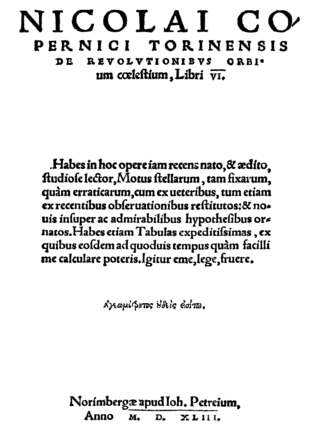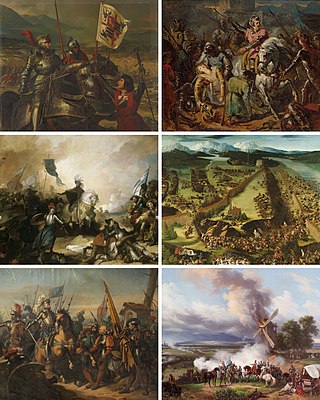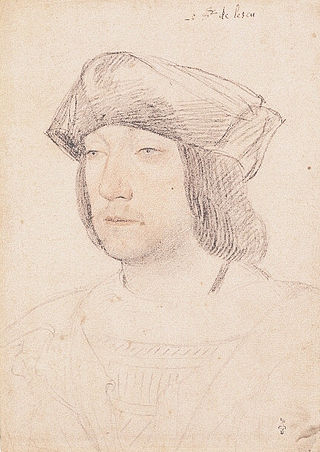| |||||
| Decades: | |||||
|---|---|---|---|---|---|
| See also: | Other events of 1522 History of France • Timeline • Years | ||||
Events from the year 1522 in France
| |||||
| Decades: | |||||
|---|---|---|---|---|---|
| See also: | Other events of 1522 History of France • Timeline • Years | ||||
Events from the year 1522 in France

The 1490s decade ran from January 1, 1490, to December 31, 1499.

Year 1543 (MDXLIII) was a common year starting on Monday of the Julian calendar. It is one of the years sometimes referred to as an "Annus mirabilis" because of its significant publications in science, considered the start of the Scientific Revolution.
The 1520s decade ran from January 1, 1520, to December 31, 1529.

Year 1522 (MDXXII) was a common year starting on Wednesday of the Julian calendar, the 1522nd year of the Common Era (CE) and Anno Domini (AD) designations, the 522nd year of the 2nd millennium, the 22nd year of the 16th century, and the 3rd year of the 1520s decade.

1637 (MDCXXXVII) was a common year starting on Thursday of the Gregorian calendar and a common year starting on Sunday of the Julian calendar, the 1637th year of the Common Era (CE) and Anno Domini (AD) designations, the 637th year of the 2nd millennium, the 37th year of the 17th century, and the 8th year of the 1630s decade. As of the start of 1637, the Gregorian calendar was 10 days ahead of the Julian calendar, which remained in localized use until 1923.

Year 1558 (MDLVIII) was a common year starting on Saturday of the Julian calendar.
Year 1491 (MCDXCI) was a common year starting on Saturday of the Julian calendar.

Francis I was King of France from 1515 until his death in 1547. He was the son of Charles, Count of Angoulême, and Louise of Savoy. He succeeded his first cousin once removed and father-in-law Louis XII, who died without a legitimate son.

Charles V was Holy Roman Emperor and Archduke of Austria from 1519 to 1556, King of Spain from 1516 to 1556, and Lord of the Netherlands as titular Duke of Burgundy from 1506 to 1555. He was heir to and then head of the rising House of Habsburg. His dominions in Europe included the Holy Roman Empire, extending from Germany to northern Italy with rule over the Austrian hereditary lands and Burgundian Low Countries, and Spain with its possessions of the southern Italian kingdoms of Naples, Sicily and Sardinia. In the Americas, he oversaw the continuation of Spanish colonization and a short-lived German colonization. The personal union of the European and American territories he ruled was the first collection of realms labelled "the empire on which the sun never sets".

The Italian Wars were a series of conflicts fought between 1494 and 1559, mostly in the Italian Peninsula, but later expanding into Flanders, the Rhineland and Mediterranean Sea. The primary belligerents were the Valois kings of France, on one side, and their opponents in the Holy Roman Empire and Spain on the other. At different points, various Italian states participated in the war, some on both sides, with limited involvement from England, Switzerland, and the Ottoman Empire.

Odet de Foix, Vicomte de Lautrec was a French military leader. As Marshal of France, he commanded the campaign to conquer Naples, but died from the bubonic plague in 1528.

Francis II was Duke of Brittany from 1458 to his death. He was the grandson of John IV, Duke of Brittany. A recurring theme in Francis' life would be his quest to maintain the quasi-independence of Brittany from France. As such, his reign was characterized by conflicts with King Louis XI of France and with his daughter, Anne of France, who served as regent during the minority of her brother, King Charles VIII. The armed and unarmed conflicts from 1465 to 1477 and 1484–1488 have been called the "War of the Public Weal" and the Mad War, respectively.

The Battle of Bicocca or La Bicocca was fought on 27 April 1522, during the Italian War of 1521–26. A combined French and Venetian force under Odet de Foix, Vicomte de Lautrec, was decisively defeated by an Imperial–Spanish and Papal army under the overall command of Prospero Colonna. Lautrec then withdrew from Lombardy, leaving the Duchy of Milan in Imperial hands.

The Italian War of 1521–1526, sometimes known as the Four Years' War, was a part of the Italian Wars. The war pitted Francis I of France and the Republic of Venice against the Holy Roman Emperor Charles V, Henry VIII of England, and the Papal States. It arose from animosity over the election of Charles as Emperor in 1519–1520 and from Pope Leo X's need to ally with Charles against Martin Luther.

The Italian war of 1536–1538 was a conflict between King Francis I of France and Charles V, Holy Roman Emperor and King of Spain. The objective was to achieve control over territories in Northern Italy, in particular the Duchy of Milan. The war saw French troops invading Northern Italy, and Imperial-Spanish troops invading France. The Truce of Nice, signed on June 18, 1538, ended hostilities, leaving Turin in French hands but effecting no significant change in the map of Italy. Overall, the Holy Roman Empire and Spain retained Habsburg primacy over Italy, but Savoy and Piedmont were occupied by France. The war strengthened animosity between the Habsburgs and the French, and reinforced ties between France and the Ottoman Empire, which had sided with Francis I against Charles V.
Events from the 1510s in England.
The Battle of Landriano took place on 21 June 1529, between the French army under Francis de Bourbon, Comte de St. Pol and the Imperial–Spanish army commanded by Don Antonio de Leyva, Duke of Terranova in the context of the War of the League of Cognac. The French army was destroyed and the battle's strategic result was that the struggle between Francis I of France and Charles V, Holy Roman Emperor for control of northern Italy was temporarily at an end.
Events from the year 1792 in France.
Events from the year 1528 in France

The Treaty of Cateau-Cambrésis in April 1559 ended the Italian Wars (1494–1559). It consisted of two separate treaties, one between England and France on 2 April, and another between France and Spain on 3 April. Although he was not a signatory, both were approved by Emperor Ferdinand I, since many of the territorial exchanges concerned states within the Holy Roman Empire.